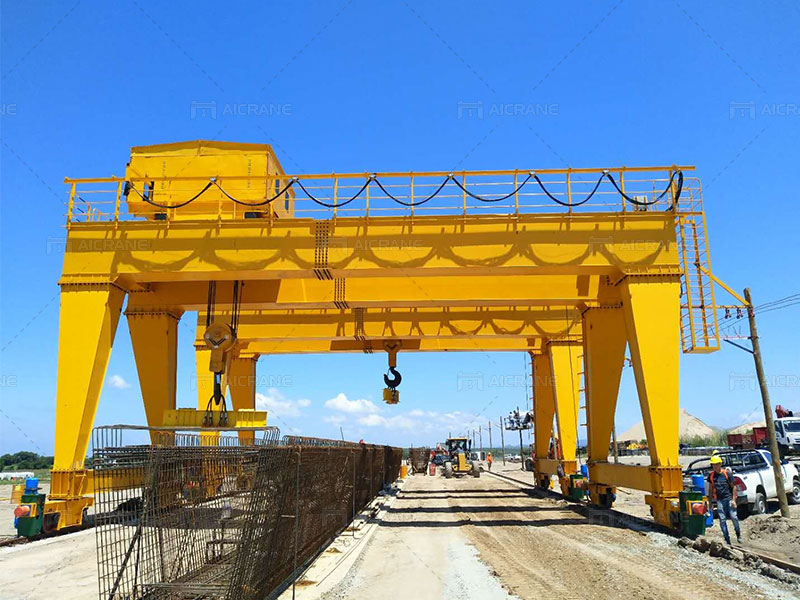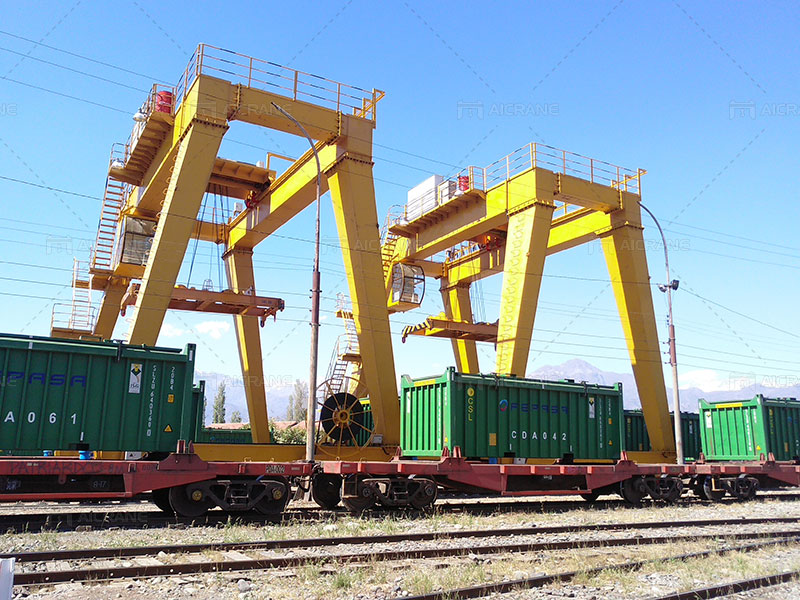In the realm of heavy industry logistics, efficiency, reliability, and safety are paramount. Among the essential equipment that supports these operations are heavy-duty gantry cranes. These cranes are indispensable for lifting and transporting massive loads in environments such as shipyards, steel mills, construction sites, and manufacturing plants. This article explores the crucial role of heavy-duty gantry cranes in heavy industry logistics, their various applications, types, benefits, and factors to consider when selecting one for your operations.

Understanding Heavy Duty Gantry Cranes
A gantry crane is a type of overhead crane that is supported by freestanding legs, typically on rails, which allow it to move along a specific path. The heavy-duty variation of gantry cranes is designed to handle extremely heavy loads, typically ranging from 20 tons to several hundred tons. These heavy duty gantry cranes are constructed from robust materials like high-strength steel and are equipped with powerful lifting mechanisms to accommodate the demanding needs of heavy industries.
Key Applications of Heavy Duty Gantry Cranes
Heavy-duty gantry cranes find application in numerous sectors where heavy materials need to be moved efficiently and safely:
- Shipyards and Ports: In shipbuilding and port operations, heavy-duty gantry cranes are used for lifting and moving ship components, containers, and heavy machinery. Their ability to handle bulky and heavy loads makes them ideal for loading and unloading ships and transporting large ship sections during assembly.
- Steel Mills and Foundries: In steel mills and foundries, Aicrane gantry cranes play a crucial role in handling hot metal ladles, steel coils, and other heavy materials. The cranes must endure extreme heat and hazardous conditions, and their precision in positioning heavy loads ensures safe and efficient operations.
- Construction Sites: For large-scale construction projects, such as bridges, power plants, and skyscrapers, heavy-duty gantry cranes are indispensable for lifting and placing heavy prefabricated sections, beams, and other construction materials. Their flexibility in terms of height and span allows them to adapt to different project requirements.
- Manufacturing Plants: In industries such as automotive, aerospace, and heavy machinery manufacturing, heavy-duty gantry cranes are used to handle massive components and machinery parts. They streamline the production process by enabling the efficient transfer of materials between different workstations.
- Mining and Quarrying: Heavy-duty gantry cranes are used in mining operations to handle large equipment, raw materials, and extracted minerals. They are essential for the maintenance and repair of mining equipment, ensuring that operations continue without unnecessary delays.

Types of Heavy Duty Gantry Cranes
Heavy-duty gantry cranes come in various configurations to suit specific industry needs:
- Single Girder Gantry Cranes: These cranes feature a single beam or girder across the span, making them suitable for lighter heavy-duty applications, typically up to 50 tons. They are more economical and easier to install compared to double girder cranes.
- Double Girder Gantry Cranes: These cranes have two girders across the span and are capable of lifting extremely heavy loads, up to several hundred tons. They provide greater stability and are equipped with more advanced lifting mechanisms, making them ideal for shipyards, steel mills, and other heavy industries.
- Semi-Gantry Cranes: Semi-gantry cranes have one leg on rails and another end attached to a building’s support structure. This design is ideal for applications where space is limited or where integration with an existing building or infrastructure is required.
- Rubber-Tyred Gantry Cranes (RTGs): These are mobile cranes mounted on rubber tires instead of rails, allowing them to move freely around a facility. They are commonly used in container handling and material storage yards due to their flexibility.
- Rail-Mounted Gantry Cranes (RMGs): These cranes move along fixed rails and are ideal for handling heavy loads over a long distance. They are commonly used in container terminals and intermodal facilities for stacking containers and other heavy loads.
Benefits of Heavy Duty Gantry Cranes in Logistics
Heavy-duty gantry cranes offer numerous advantages in heavy industry logistics:
- Increased Efficiency: These cranes significantly reduce the time required to move heavy loads from one point to another. This speed enhances overall productivity in manufacturing plants, ports, and other facilities.
- Enhanced Safety: Heavy-duty gantry cranes are equipped with advanced safety features such as anti-sway technology, overload protection, and emergency stop mechanisms. These features help prevent accidents and ensure the safety of personnel and equipment.
- Versatility: Gantry cranes can be customized to fit various operational needs, including adjustable height, span, and lifting capacities. This adaptability makes them suitable for diverse applications across different industries.
- Cost-Effectiveness: Compared to other types of cranes, double girder gantry cranes can be more cost-effective due to their freestanding design, which does not require substantial infrastructure changes. This reduces installation costs and downtime.
- Durability and Reliability: Constructed from high-strength materials and equipped with robust lifting mechanisms, heavy-duty gantry cranes are built to withstand harsh environments and heavy use. Their reliability reduces maintenance costs and ensures continuous operation.
Factors to Consider When Selecting a Heavy Duty Gantry Crane
When choosing a heavy-duty gantry crane for your logistics operations, several factors need to be considered:
- Load Capacity: The crane’s load capacity must match or exceed the heaviest load it will need to lift. Consider future operational needs when determining capacity.
- Span and Height Requirements: The crane’s span (width) and lifting height should align with the specific dimensions of your operational area. Ensure that the crane can move freely and reach all necessary points.
- Operational Environment: Consider the environment where the crane will be used. For example, outdoor cranes require weather-resistant features, while those used in foundries may need to withstand extreme temperatures.
- Mobility Requirements: Depending on your logistics needs, choose between fixed, semi-gantry, or mobile rubber-tyred cranes. Each type offers different benefits in terms of maneuverability and space usage.
- Control Options: Modern gantry cranes offer various control options, including pendant control, wireless remote control, and cabin control. The choice depends on the operational environment and safety considerations.
- Customization: Ensure that the crane can be customized to include specific features such as anti-sway technology, automated systems, and additional safety devices to meet your specific needs.
Conclusion
Heavy-duty gantry cranes are vital assets in heavy industry logistics, offering unparalleled efficiency, safety, and versatility. Their ability to handle extremely heavy loads with precision makes them indispensable for various sectors, from shipbuilding and steel production to construction and manufacturing. When selecting a heavy-duty gantry crane, it is essential to consider the specific needs of your operations, including load capacity, environment, and customization options. By making informed choices, industries can ensure safe and efficient material handling, leading to increased productivity and reduced operational costs.